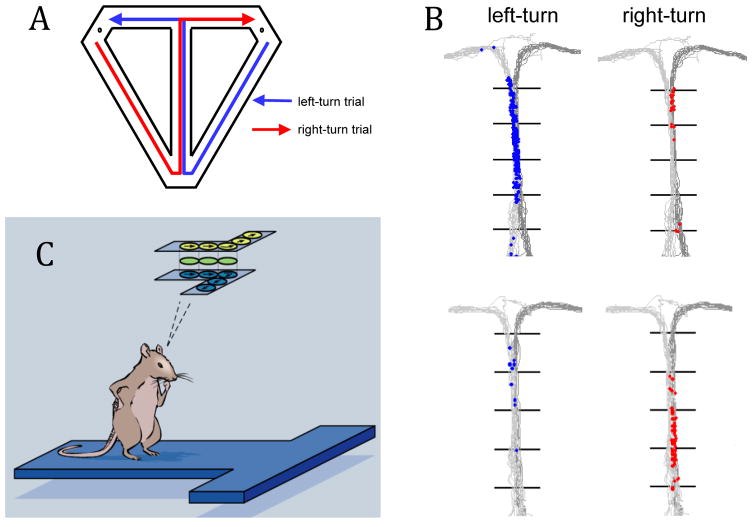Figure 2.
A. T-maze alternation task. B. Left turn (light gray) and right turn (dark gray) paths through the maze and spiking patterns for left-turn and right-turn paths. C. Cartoon summary of locations of place fields on left-turn (yellow) and right-turn (blue) paths. Some cells fired equally on both paths, suggesting a mechanism of connecting the two types of episodes (from Wood et al., 2000).

